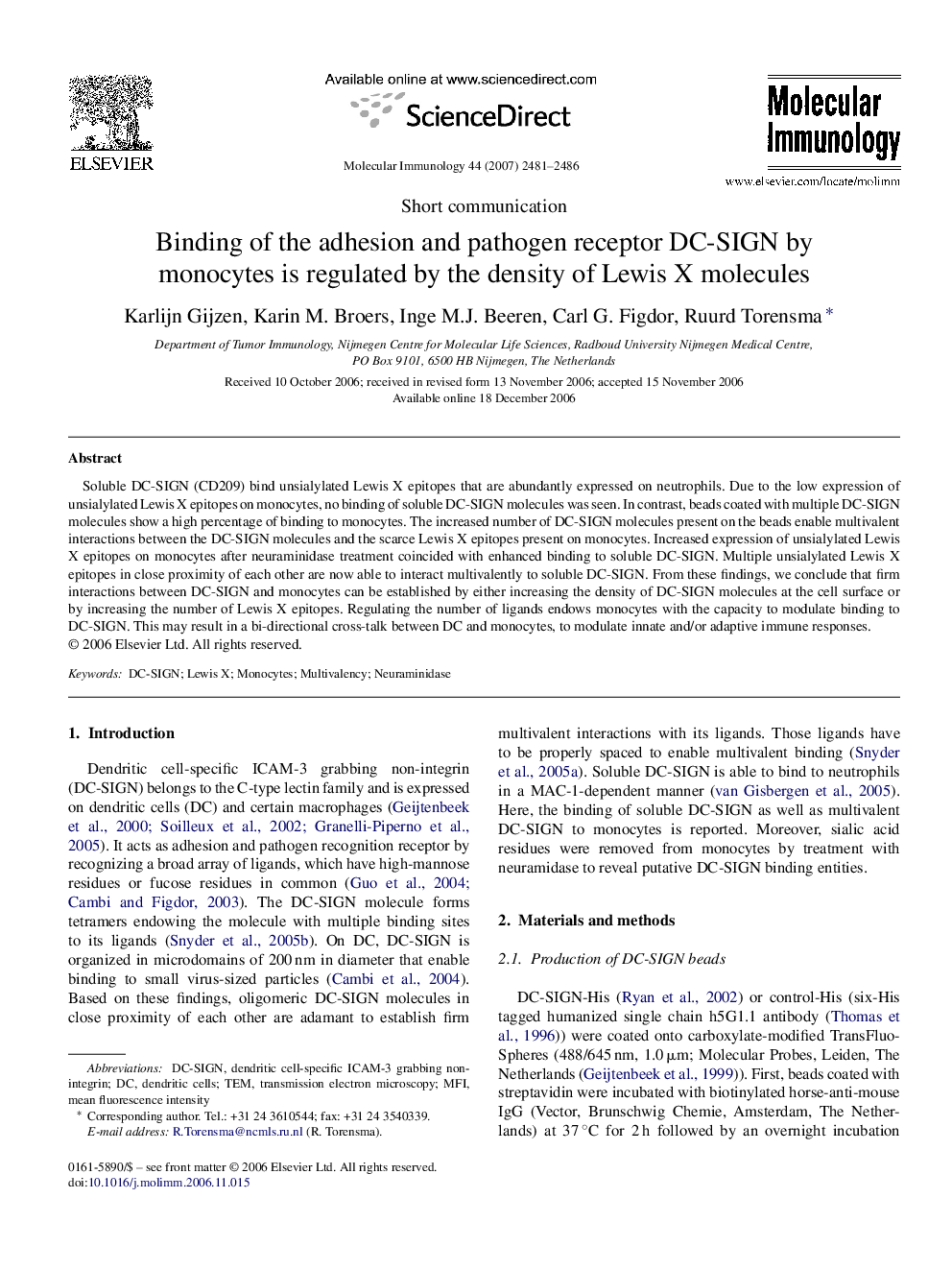| Article ID | Journal | Published Year | Pages | File Type |
|---|---|---|---|---|
| 2832255 | Molecular Immunology | 2007 | 6 Pages |
Soluble DC-SIGN (CD209) bind unsialylated Lewis X epitopes that are abundantly expressed on neutrophils. Due to the low expression of unsialylated Lewis X epitopes on monocytes, no binding of soluble DC-SIGN molecules was seen. In contrast, beads coated with multiple DC-SIGN molecules show a high percentage of binding to monocytes. The increased number of DC-SIGN molecules present on the beads enable multivalent interactions between the DC-SIGN molecules and the scarce Lewis X epitopes present on monocytes. Increased expression of unsialylated Lewis X epitopes on monocytes after neuraminidase treatment coincided with enhanced binding to soluble DC-SIGN. Multiple unsialylated Lewis X epitopes in close proximity of each other are now able to interact multivalently to soluble DC-SIGN. From these findings, we conclude that firm interactions between DC-SIGN and monocytes can be established by either increasing the density of DC-SIGN molecules at the cell surface or by increasing the number of Lewis X epitopes. Regulating the number of ligands endows monocytes with the capacity to modulate binding to DC-SIGN. This may result in a bi-directional cross-talk between DC and monocytes, to modulate innate and/or adaptive immune responses.
